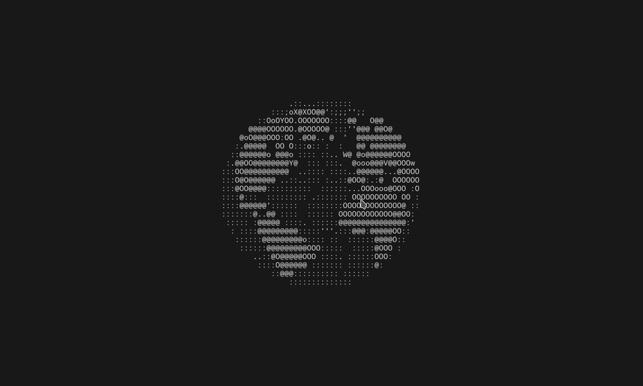Render an ASCII globe in your terminal. Make it interactive or just let it spin in the background.
v0.2.0:
- added multiple CLI arguments for setting up the scene (
refresh-rate,globe-rotation,cam-rotation,cam-zoom,location,focus-speed,night,template,texture,texture-night) - added experimental listing mode that supports reading coordinates from
standard input and going through all of them, animating camera target changes
(see
--pipe) - enabled ability to display night side of the globe using an additional texture
- changed default Earth texture (now includes New Zealand)
- added vim-style navigation for the interactive mode
- improved internal library representation of
Texture - improved documentation
v0.1.2
- added clearing screen on exit
- fixed panic when using rust version <1.45
v0.1.1
- fixed mouse capture staying on after exit
v0.1.0
- initial release
To build globe-cli you will need to have
Rust programming language installed on your machine.
Use cargo install:
cargo install globe-cli
Or git clone and cargo run --release directly from the repository.
globe can be installed from available AUR packages using an AUR helper. For example,
yay -S globe-cli
If you prefer, you can clone the AUR packages and then compile them with makepkg. For example,
git clone https://aur.archlinux.org/globe-cli.git
cd globe-cli
makepkg -si
You can also use Docker to try out globe, no Rust needed. After cloning the repo, just build and run an image from the Dockerfile contained at the root of the project:
docker build -t globe .
docker run -it --rm globe -sTo get a full listing of available features and options, show the --help
information with:
globe -h
Display a globe in screensaver mode using the -s option.
globe -s
It's kind of boring. Let's add some camera rotation to make it look more alive:
globe -sc2
Now let's also enable the night side and rotate the globe on its axis:
globe -snc2 -g10
If you want to adjust things at runtime check out the interactive mode. Here you can pan the globe around using either the mouse or keyboard arrows:
globe -i
Use + and - to control the globe rotation speed, , and . to control
the camera rotation speed, PgUp and PgDown to control the camera zoom,
n to toggle displaying globe's night side.
Settings we used on the screensaver mode also work:
globe -inc2 -g10
Last but not least there is the listing mode. It allows you to pass location coordinates to the program and see them shown one by one on the globe. Currently, it only supports a very basic input format. Here's an example:
echo "0,0.5;0.1,0.5;0.3,0.5;0.5,0.5;0.7,0.5" | globe -p
If you're feeling creative, you can also load custom textures, like so:
globe -in --texture ./path-to-texture --texture-night ./path-to-night-texture
To use globe within your Rust project, add it to your dependencies:
[dependencies]
globe = "0.2.0"
First create a Globe:
let mut globe = GlobeConfig::new()
.use_template(GlobeTemplate::Earth)
.with_camera(CameraConfig::default())
.build();
Next make a new Canvas and render the Globe onto it:
let mut canvas = Canvas::new(250, 250, None);
globe.render_on(&mut canvas);
You can now print out the canvas to the terminal:
let (size_x, size_y) = canvas.get_size();
// default character size is 4 by 8
for i in 0..size_y / 8 {
for j in 0..size_x / 4 {
print!("{}", canvas.matrix[i][j]);
}
println!();
}
See globe-cli code for examples of runtime changes to the Globe and it's
Camera.
Rendering math based on C++ code by DinoZ1729.

